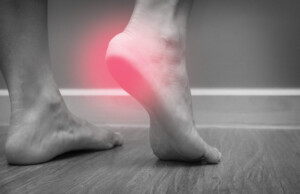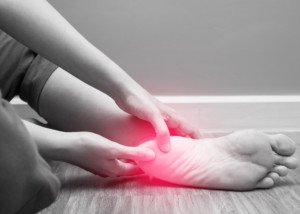
If you’ve tried conservative treatment for plantar fasciitis with no results, don’t give up.
There is a fast non-surgical treatment that, according to a study, has a 95 percent success rate at ridding the heel pain. The results of this study were presented at the 2008 annual meeting of the Radiological Society of North America.
Common conservative treatments for plantar fasciitis involve exercises, stretching, arch supports, custom orthotics, night splints and massage.
But what if these conservative treatments don’t work for your plantar fasciitis?
Don’t think surgery just yet.
Said Luca M. Sconfienza, MD, from Italy’s University of Genoa: “There is no widely accepted therapy or standard of care for patients when first-line treatments fail to relieve the pain of plantar fasciitis. Our new technique is an effective, one-time outpatient procedure.”
It may take up to a year or more, if at all, for conservative treatments for plantar fasciitis to work.
Dr. Sconfienza’s treatment involves a new ultrasound-guided method, plus injection of steroid. Forty-four patients participated, whose plantar fasciitis did not respond to conservative treatments.
1) A small amount of anesthesia is injected.
2) The anesthetic needle repeatedly punctures the sites of pain (“dry-needling”).
3) A small amount of local bleeding results from the dry-needling, and this promotes healing.
4) A steroid injection is given around the fascia to eradicate pain and inflammation.
Ultrasound is used for guidance to enhance accuracy and to assure that the injection is not directly into the fascia. The procedure takes 15 minutes.
Of the 44 patients, 42 experienced disappearance of symptoms (95 percent). Dr. Sconfienza ssid, “This therapy is quicker, easier, less painful and less expensive than shockwave therapy.”
Shockwave therapy is when sound waves are directed at the pain site, but this treatment for plantar fasciitis is painful and doesn’t always work.
In this painful-heel condition, the ligamentous fascia becomes inflamed, causing the classic burning-like pain in the heel, which may also extend to the lower lateral portions of the foot.
If you’ve been diagnosed with plantar fasciitis what should you do?
“Steroid (cortisone) injections under ultrasound guidance can be helpful,” says Bruce Pinker, DPM, who specializes in sports medicine and surgery of the foot and ankle.
“From my experience, usually three to four injections are needed to resolve plantar fasciitis, if not combined with other modalities.
“Overall, one cortisone injection will not do the job for most patients.
“Physical therapy, orthopedic strappings and custom made orthotics usually work best.”
My Experience with Plantar Fasciitis
There was a time when I thought I was done. Both feet were affected, and at times, it really hurt.
I believe that a combination of custom made orthotics and diligent stretching, plus walking hills (which stretches the fascia) promoted the healing, which took many months to 100 percent resolve.
In my case, the cause was walking on a treadmill on my heels to engage my shin muscle (anterior tibialis).
I haven’t done this since, and I’ve never had a recurrence of the burning heel pain.
Give conservative treatments a good while to be effective for plantar fasciitis.
There was a time when I thought I’d be stuck with this condition chronically, but it’s completely gone.
 Dr. Pinker is with Progressive Foot Care, which provides state-of-the-art, full diagnostic testing and treatment of the foot. He’s a professional foot and ankle health and wellness speaker who delivers many original seminars annually such as “Keep On Running.”
Dr. Pinker is with Progressive Foot Care, which provides state-of-the-art, full diagnostic testing and treatment of the foot. He’s a professional foot and ankle health and wellness speaker who delivers many original seminars annually such as “Keep On Running.”
 Lorra Garrick is a former personal trainer certified by the American Council on Exercise. At Bally Total Fitness she trained clients of all ages for fat loss, muscle building, fitness and improved health.
Lorra Garrick is a former personal trainer certified by the American Council on Exercise. At Bally Total Fitness she trained clients of all ages for fat loss, muscle building, fitness and improved health.
.









































